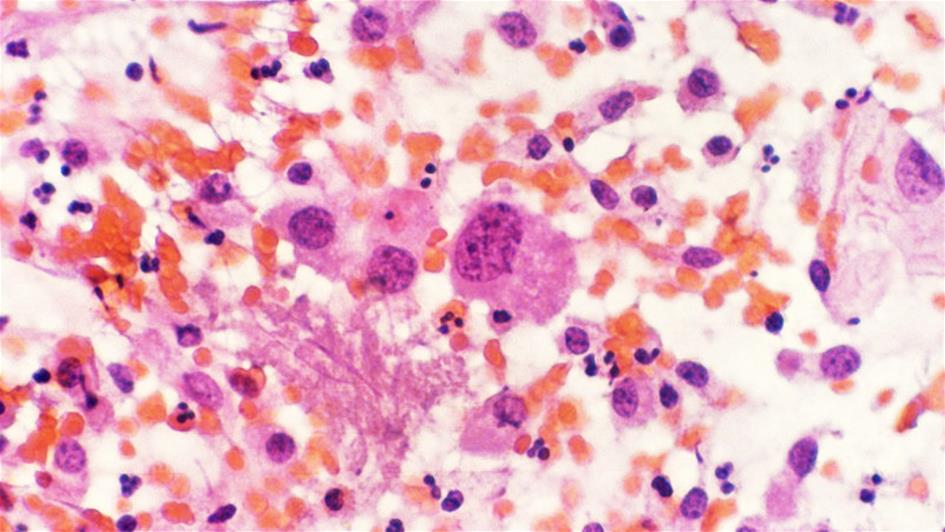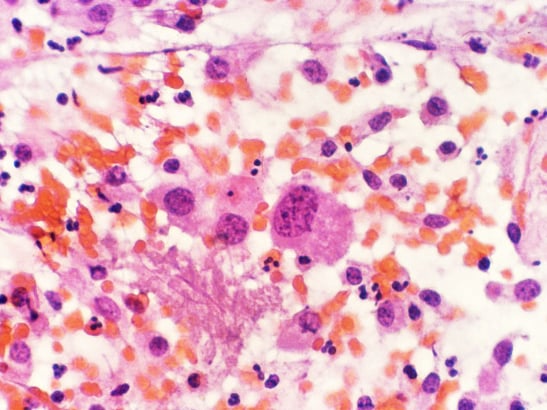
Scientists have identified a change in the DNA of patients with myeloma that increases their risk of developing bone disease, a common and serious complication of this cancer.
The study provides the first evidence that the development of myeloma bone disease is influenced by a patient’s DNA and has implications for patient treatment.
The DNA change affects a gene encoding osteoprotegerin – an important signalling protein that helps regulate the density of bones.
In patients with myeloma bone disease, bones are broken down faster than they can be repaired resulting in fractures and lesions. Osteoprotegerin is known to keep the numbers of osteoclasts – specialised cells that break down bone – in check. Mutations adversely affecting the gene may contribute to excessive bone breakdown.
Researchers from The Institute of Cancer Research, London, with colleagues in Germany and the US, analysed the DNA of 3,774 myeloma patients using sophisticated next-generation technology. The team then used a variety of medical imaging techniques to detect which of these patients had myeloma bone disease and which of the patients were unaffected.
The researchers used statistical analysis to compare the DNA sequence data from the group of patients who developed myeloma bone disease with those who did not, to identify any mutations that influence the risk of developing myeloma bone disease.
The study was published in the journal Leukemia and funded by Myeloma UK, Bloodwise (formerly Leukaemia & Lymphoma Research), Cancer Research UK and the NIHR Biomedical Research Centre at The Royal Marsden and the ICR.
Bone disease is the most common complication of myeloma, affecting a high proportion of patients. The disease is characterised by the formation of soft holes on the bone surface called lesions, which cause pain and increase the risk of fractures.
The findings could enable scientists to develop new strategies to prevent the development of myeloma bone disease and identify which patients may benefit from treatment with existing bone therapies such as bisphosphonates, which work by helping to stop the breakdown of bone.
Professor Richard Houlston, Professor of Molecular and Population Genetics at the ICR, said: “It is really important to understand why some patients with myeloma are severely affected by bone disease. This study tells us that at least part of the answer is in the patient’s DNA, greatly improving our understanding of the disease.
"We want to be able to identify which patients are most at risk, and which treatments are most likely to help them – this study give us clues that can begin to help us do this. In the longer term, understanding the factors that contributed to bone breakdown could help us find new treatments for the disease.”
